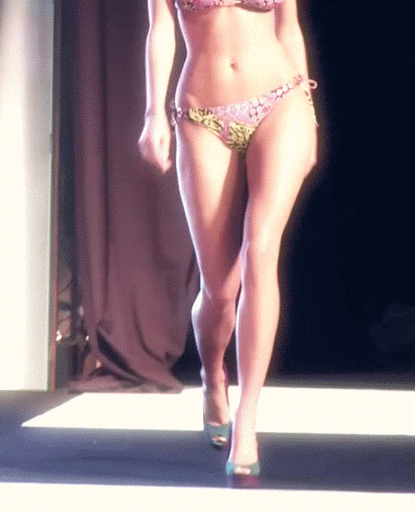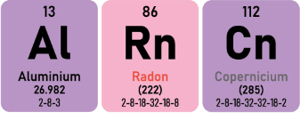Eporner HD Sex Porn Discounts Sex Games Porn Games XXX Games Hentai Games PornStar Games 3D Porn Cams Party BEST OnlyFans
Live Sex Free Live Sex Free Sex Games Páginas Porno Rose Toy Nude Celebrities Celebrity Sex Videos TikTok Porn AI Porn Generator
Live Sex Free Live Sex Free Sex Games Páginas Porno Rose Toy Nude Celebrities Celebrity Sex Videos TikTok Porn AI Porn Generator
Published on 2018/06/18


































IGOR VORONTSOV 2018
I knew about talented photographer Igor Vorontsov exactly 3 years ago. This man has an exquisite taste when it comes to choose the models he works with and create a setting to photograph them. Pictures that many times carry us to past times where the most technological device was an oil lamp.

































THE EROTICISM OF ANDREAS PUHL
Andreas Puhl is a photographer passionate about nude and portrait work, dedicated to taking his art to the highest level.
Far from relying on digital alterations, Andreas aims to highlight authentic beauty and capture genuine emotions.
The result is images filled with sensitivity, strength, and a deeply moving aesthetic.

# View photographs
ExtraBall
The fascinating world of fashion.

ExtraBall2
(Clicking on these links daily you support ALRNCN's work. They're collaborators or sponsors and, by visiting their sites, they like us even more)










THE INSTAGRAM OF THE DAY: JULISEWKA
Julia Janiszewska
modeling | traveling | photoshoots

# View photos
You can also follow us on our INSTAGRAM ACCOUNT
ExtraBall
Back stretches.
Full scene
She’s the actress Alura Jenson. In this other link, you can check out many of her scenes.
ExtraBall2
(Clicking on these links daily you support ALRNCN's work. They're collaborators or sponsors and, by visiting their sites, they like us even more)










 CamBB.xxx
CamBB.xxxWe find the best live porn cams across many different cam sites like Streamate, Chaturbate, Cam4 and Stripchat.
 ChatSex.xxx
ChatSex.xxxWith Chat Sex you get free sex cams featuring nude cam girls you can chat with for free.















RECOMMENDED SITES
 Add your site
Add your site
- Porn Pics
- sweetlicious
- Motherless
- Erotic Beauties
- BoobieBlog
- celeb-stalker.com
- Babes & Bitches
- Kanoni Net
- Candid Teens
 Add your site
Add your site💩 CrazyShit
🤪 eFukt
NudeChatGirls
👉🍑 Top XXX Pictures
Bingo Porno
Best Porn Blog Sites
 Sex Games
Sex Games
Real Amateur Porn
MrPornGeek
Comepollas
PornScn Free Porno
AI Girlfriend App
Hardcore Porn Videos
NSFW.Tools
Sex AI Chat
Porn Game

















AMATEUR FLESH: CREAMYMOANA
Today I stumbled across another one of those X accounts that, at first glance, look like they belong to an actual content creator. I’m going to share photos and videos from it because they’re worth it, but I won’t lie: something feels off.
This isn’t the first time — and it won’t be the last. You can tell right away when you see that 90% of the timeline is nothing but retweets of other girls. That’s when the doubts kick in. A real creator might do collabs or give someone a shoutout here and there, but they don’t spend their whole profile promoting others.
There are a few possible scenarios:
- Fake accounts (impersonation): profiles pretending to be the creator, using stolen photos, with the sole purpose of driving traffic to paid links like OnlyFans, pirate sites, or outright scams.
- Run by third parties/agencies: it’s not her managing the account, but a community manager or agency handling several girls at once, cross-retweeting between them.
- Self-promo networks (shoutout for shoutout): a “you retweet me, I retweet you” cycle that spirals out of control until the account looks more like a billboard than a personal profile.
Whatever the case, when you see a profile that lives almost entirely on retweeting others, odds are the real creator isn’t behind it. From there, it’s up to you. Don’t say I didn’t warn you.

# See photos and videos
ExtraBall
Art Attack.
ExtraBall2
(Clicking on these links daily you support ALRNCN's work. They're collaborators or sponsors and, by visiting their sites, they like us even more)










RANDOM AI-GENERATED IMAGES VOL23
The future always shows up disguised as a game
Today we laugh at these images, sharing them as curiosity or just a bit of casual thrill. They look like a game: impossible models, perfect women who don’t exist, scenes that feel like a wild dream rendered in pixels. And yet, what begins as a game often becomes the prelude to something much bigger.
Look back: the internet started as a toy for computer geeks. Social media looked like a place to waste time posting nonsense. The smartphone was just an unnecessary luxury for a handful of executives. And now? We live connected 24/7, glued to our phones, social networks dictate what we talk about, and Google gives us answers before we even know what to ask. The game always ends up writing the rules.

It’s the same with artificial intelligence. Today we use it to create erotic images with a surreal touch, testing where the machine ends and where our imagination begins. But what we’re seeing in these pictures might be the seed of how the future of digital desire will be built.
There’s no shortage of possible scenarios. In a few years, the line between amateur porn and AI-generated porn could vanish. We might see complete relationships —sex, affection, conversation— with digital beings tailored to each person’s taste. Maybe one day you’ll create your “perfect partner” with a few prompts and a button, and going out to flirt won’t even cross your mind because everything you want is already on your screen.
And there’s no need to go all apocalyptic: it’s not so different from what we already have. Netflix killed video rentals, Tinder changed how people meet, and OnlyFans redefined how sex is sold. It all starts as a game, something trivial, something “that won’t change anything”… until suddenly it changes everything.
These images aren’t just pretty pictures or cheap thrills. They’re a dress rehearsal for the world ahead. A future where fantasy isn’t consumed—it’s manufactured. Where the machine doesn’t just offer you pleasure, but designs it for you, adapts it to your mood, and updates it daily like software patches.
And here’s the big paradox: we know it’s not real, but maybe that stops mattering. Because if something excites you, moves you, or gives you what you’re after—does it really matter whether it’s made of flesh or code? In the end, what’s always driven us is desire. And in the hands of AI, desire has no limits.

# See images
ExtraBall
Connecting positive with negative.
ExtraBall2
(Clicking on these links daily you support ALRNCN's work. They're collaborators or sponsors and, by visiting their sites, they like us even more)











Contact
You can tell us whatever you want via email: [email protected]
If you prefer, you can use this contact form:
If you prefer, you can use this contact form:






AMATEUR FLESH: BROSSENKO
Do you really think the internet would have come this far without everything that has to do with sex? I seriously doubt it.
Sure, people say it was email, search engines, and social networks that changed everything. But let’s be honest: what really pushed technology forward, what filled up entire servers and kept connections buzzing late at night, were the videos, the photos, and the adult sites.
Sex has always been the hidden engine. It drove webcams, online payment methods, streaming video, virtual reality, and even the AI filters we all use in our apps today. All of it was born—or perfected—because millions of people were hungry to watch and share porn.
In the end, the adult industry was the one that taught the internet how to run, how to grow, and how to become what it is now. And even though some try to rewrite history with tech founders and Silicon Valley gurus, we all know that without sex, the internet would still be nothing more than a boring bulletin board.
So, while you let that sink in, I’ll leave you with Brossenko.

# See photos and video
ExtraBall
Wet floor.
ExtraBall2
(Clicking on these links daily you support ALRNCN's work. They're collaborators or sponsors and, by visiting their sites, they like us even more)









ELDEHEN’S NUDES
Eldehen is a photographer based in Brussels, Belgium, whose work explores the intersection between the human and the urban.
Trained as an electrical engineer with a focus on optics, he turned technical precision into a personal artistic eye.
His work spans several genres: model portraiture and fine-art nude.
In his images, the expressive power of the body meets the atmosphere of abandoned spaces, creating compositions that speak between the intimate and the monumental, the ephemeral and the timeless.

# View photos
ExtraBall
You can’t tell what’s AI anymore—and what isn’t.
ExtraBall2
(Clicking on these links daily you support ALRNCN's work. They're collaborators or sponsors and, by visiting their sites, they like us even more)






























